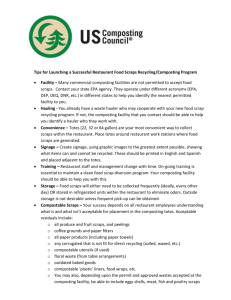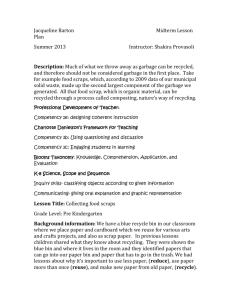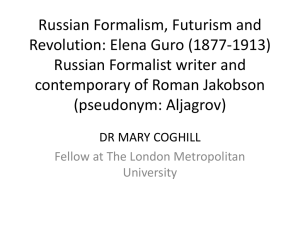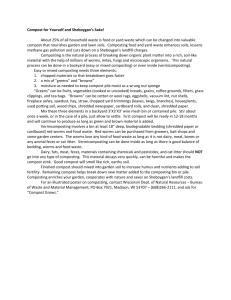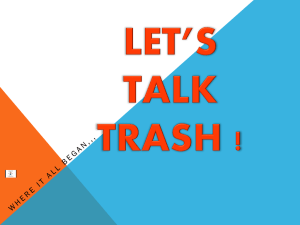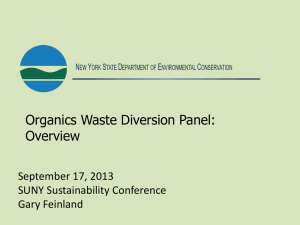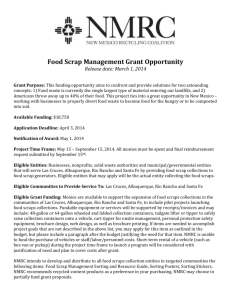Jacqueline Barton Summer 2013 Lesson #2
advertisement
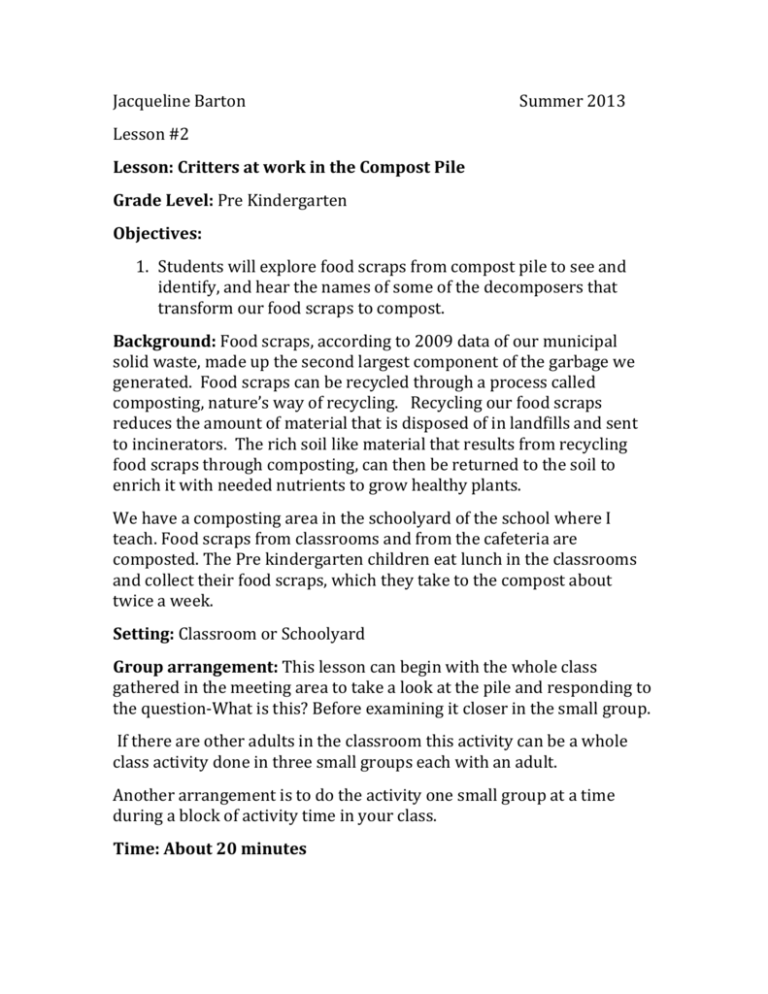
Jacqueline Barton Summer 2013 Lesson #2 Lesson: Critters at work in the Compost Pile Grade Level: Pre Kindergarten Objectives: 1. Students will explore food scraps from compost pile to see and identify, and hear the names of some of the decomposers that transform our food scraps to compost. Background: Food scraps, according to 2009 data of our municipal solid waste, made up the second largest component of the garbage we generated. Food scraps can be recycled through a process called composting, nature’s way of recycling. Recycling our food scraps reduces the amount of material that is disposed of in landfills and sent to incinerators. The rich soil like material that results from recycling food scraps through composting, can then be returned to the soil to enrich it with needed nutrients to grow healthy plants. We have a composting area in the schoolyard of the school where I teach. Food scraps from classrooms and from the cafeteria are composted. The Pre kindergarten children eat lunch in the classrooms and collect their food scraps, which they take to the compost about twice a week. Setting: Classroom or Schoolyard Group arrangement: This lesson can begin with the whole class gathered in the meeting area to take a look at the pile and responding to the question-What is this? Before examining it closer in the small group. If there are other adults in the classroom this activity can be a whole class activity done in three small groups each with an adult. Another arrangement is to do the activity one small group at a time during a block of activity time in your class. Time: About 20 minutes Materials: Bucket with food scraps taken from compost pile Newspaper or large tray to place food scraps on Finished compost called Humus Hand magnifiers or magnifying cups Chart showing decomposers Paper and pencils Procedure: Children are gathered around the pile of scrap, and I’m sure I will hear words such as: Yuck! Gross! I don’t want to touch it! etc. 1. “This food scrap is just like the food scraps in our bucket, except this one has been in the compost pile. These food scraps are being recycled, and when it’s done, it’s going to look like this.” Show children the humus. “Does this look like food scrap anymore? What does it look like?” “How did the food scraps changed from this to this?” “Let’s take a look at the pile to see what else besides food scraps is in here” Note: some children will not want to touch the pile, that’s fine. I think it is especially important for the teacher to be comfortable touching it. 2. After looking and commenting on what they see, children can be offered magnifying lens to take a closer look. After more observing and talking about what they see, show children the chart of organisms that are in a compost pile. They can identify and hear the names of some of the creatures they are seeing, as well as search for some that they see on the chart. “So in a compost pile there are food scraps and there are also these creatures. Some of them we can see, and some are so tiny that we can’t see them.” “What do you think they do in the compost pile?” “The creatures eat the food scrap and when they poop, this is what we have, this wonderful thing called humus.” 3. Children can be invited to do drawings of any organism they saw in the pile. Assessment: Dramatic Play- pretend to be a creature in the compost pile. What creature are you? If you are a creature with legs how do you move? without legs? with wings? Now you are eating some food scraps and after you eat what do you do next? Follow up activities: Putting food scraps in bin Read Aloud: Composting: Nature’s Recyclers by Robin Koontz Charlotte Danielson’s Framework for Teaching Competency 1e: designing coherent instruction Competency 3b: Using questioning and discussion Competency 3c: Engaging students in learning Blooms Taxonomy: Knowledge, Comprehension, and Application K-8 Science, Scope and Sequence: Inquiry skills: observing, communicating, and manipulating materials. Resources: Cornell Composting, Composting in Schools eHow health: Recycling A School Waste Reduction, Reuse, Recycling, Composting & Buy Recycled Resourced Book New York State Department of Environmental Conservation www.dec.ny.gov/chemical/294.html
